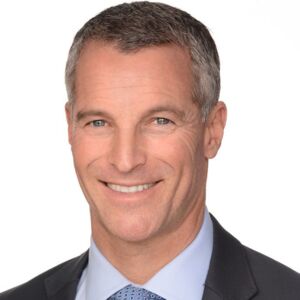Shake out in private markets
By Elizabeth Fry

In its latest report, Preqin reveals investors are selling higher-risk private equity and venture capital investments and turning to other alternatives.
However, the data group warns that an uncertain near-term outlook for markets adds a further incentive for investors to slow the pace of deploying cash in all private markets.
Also, the pullback in equities has left allocations to alternative assets higher as a proportion of total portfolio value, allowing less room for new capital commitments.
Jameson Capital director and former Macquarie director Nick Browne says it makes sense that asset classes that have performed exceptionally well over the past decade would correct first.
Many private market assets have potentially overshot their true value due to the weight of capital chasing these assets in a low inflation and low-interest rate environment, he goes on to say.
"This is particularly true in geographies where there is a hometown bias from local institutional investors chasing undifferentiated and fashionable investment themes," he says.
But Browne says while Preqin's findings are not incorrect, there is much more to the story.
This is especially true in Australia, where there is more pressure on investors - especially super funds - to achieve their return hurdles of CPI plus between 300 to 400 basis points.
And with June quarter CPI at 6.1 per cent and funds needing a 9-10 per cent return, that will be challenging if they buy logistics assets with 4 per cent cap rate.
"It will become increasingly difficult to achieve those returns without taking more risk through high-yielding alternative strategies like special situations, hedge funds, aged care or student accommodation.
Browne adds that it has been easy for super funds to achieve decent returns in the last five or ten years while capitalisation rates continued to compress and it made sense to buy core assets.
Return hurdles for a lot of investors in this region are very low and they haven't had to seek out opportunistic type strategies in the last ten years, and a lot of capital has flown to low-risk investments.
But a decade of relatively easy returns and low hurdles is over, and investors are trying to work out how to rebalance their portfolios out of the core into opportunistic or value add strategies that are generating low double digits to mid-teens type returns.
"Since core investments are no longer capable of achieving these return hurdles, we are starting to see forward-thinking investors re-weighting their portfolios to include higher-yielding investment strategies like hedge funds or special situations, where previously this has not been a focus," he argues.
So contrary to Peqin's findings, Browne says asset classes and investment strategies that can generate comparatively higher yields without taking on too much risk are undoubtedly seeing increased inflows.
For instance, select sectors in real estate that have not suffered excessive cap rate compression through the last cycle will unquestionably attract investor attention.
Similarly, there are select strategies in private debt for investors willing to participate in the part of the capital stack where returns have not been crushed by the weight of capital.
However, Browne notes capital is still flowing into the popular areas like build-to-rent and logistics, office and large-scale infrastructure.
But these now look very expensive.
"The value frankly just isn't there," he says.
"When cap rates are between three and five per cent and the ten-year yield bond yield is 3.5 per cent, it doesn't leave much of a spread or a risk premium.
"When a guy like Jeff Bezos, the biggest user of logistics assets, thinks he is over-committed to logistics, I am at a bit of a loss to understand why investors pile into the sector this late in the cycle."
As for private debt, he warns that this asset class includes senior debt, real estate and infrastructure loans where the yield can be as undesirable as core real estate.
Senior debt for real estate and infrastructure loans used to achieve an internal rate of return of between 9 and 11 per cent, but the number has slipped between 4 to 6 per cent as the market grew bigger.
Unloved assets
Jameson is an opportunistic investor
Most of its investors have a return target of 15 per cent, net of fees and net of taxes.
As such, Browne focuses on the unloved sectors of the economy, where there is a perception of underperformance.
Hospitality comes to mind since the pandemic saw venues closed for two years and investors deserted them. The reopening of hotels and restaurants has seen these assets performing well.
Likewise, with private debt, Browne prefers the B-notes - which carry higher risk and higher returns compared to investment-grade notes - and are less popular.
Health care and seniors living is another attractive niche because of its highly predictable ageing population "Its fundamental social infrastructure - it has to exist in one way, shape, or form, and it has direct links to government income which is a definite positive in a deteriorating economic environment."
Finally, the sector had an attractive entry point.
"There is no question that the outbreak of Covid-19 disproportionately affected the seniors'' living sector. That's where health care issues manifested, making it an unloved sector which we could buy relatively cheaply," he says.
Jameson targets offshore investors with huge licks of capital who understand complex strategies.
Browne points to the US and Europe, where special situations and opportunistic strategies make up a small but distinct component of pension funds'' asset allocation.
He says capital from Asia is looking to invest in developed economies like Australia with good growth prospects -- a claim that jibes with Preqin.
The data group says APAC private capital markets will go from strength to strength as US and European investors diversify.
Preqin forecasts that private capital assets under management in Asia, excluding RMB-denominated funds, will represent 12.7 per cent of the global market at the end of 2022, reaching US$2.25 trillion by 2026, at a compound annual growth rate of 15 per cent.
Browne says Asian investors count on the local investors' love for buying assets they are comfortable with - thereby missing trends and creating unusual price discrepancies.
"Australian investors are comfortable going into office or retail even when it stops making sense. They create a pricing bubble in one area and totally miss investing in other areas," he argues.
"Offshore investors cannot believe that some of these arbitrages are not traded away. Mispricing opportunities are identified quickly in other markets and only exist for a narrow window."



